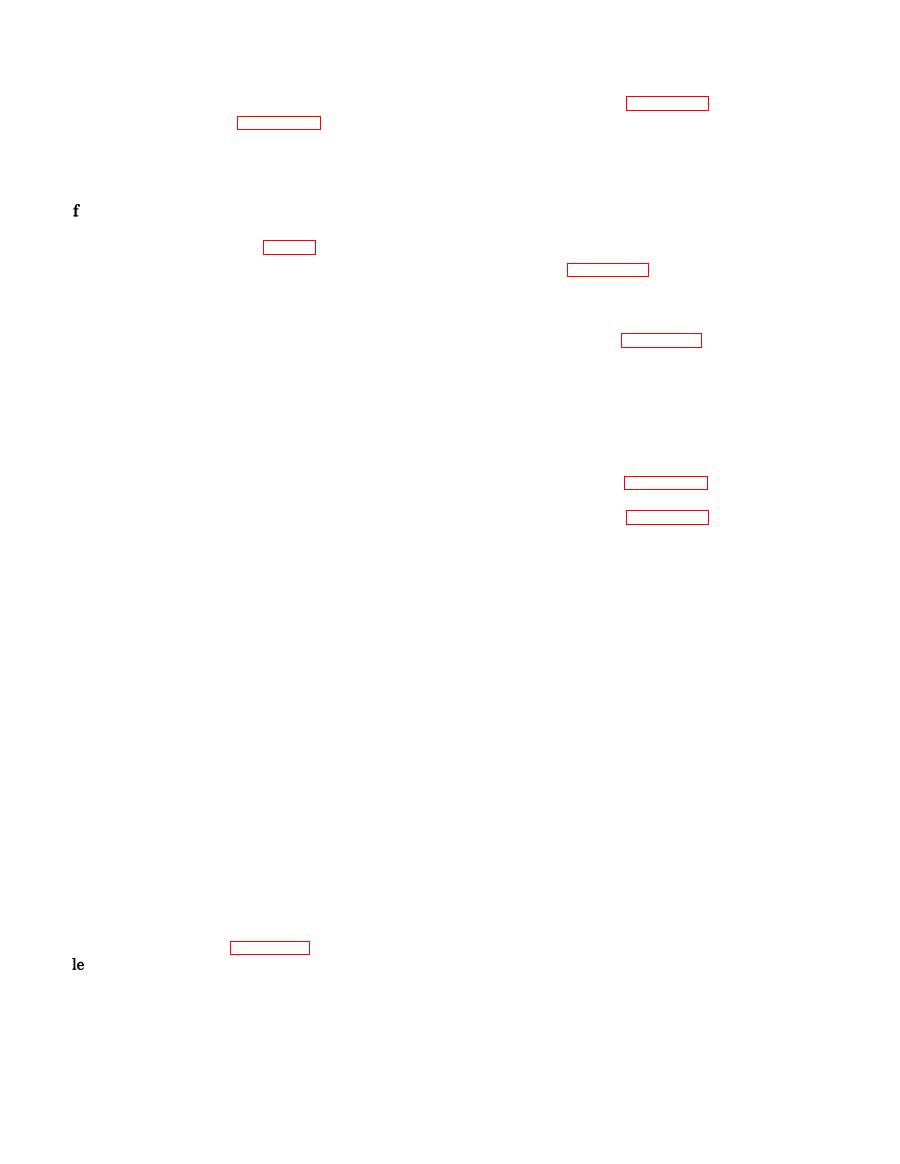 |
|||
|
|
|||
|
|
|||
| ||||||||||
|
|
 TM 10-3930-634-34
any defective part.
ton forscored areas or damage. Replace all defective
parts.
the rear steering pump.
f. Installation. Install the rear steering pump (TM
the three-position cylinder.
10-3930-634-12).
e. Test.
(1) Packing drag test.
5 - 1 8 . Steering Mode Selector Valve
(a) With the cylinder horizontal, fill the rod end
the cylinder with oil.
a. Removal.
(b) Open the head end part of the piston to the
(1) Access to the valve is through the steering
atmosphere by loosening nuts (6, fig. 5-15) and sepa-
compartment door beneath the cockpit.
rating head (14) from cylinder block (21).
(2) Refer to figure 5-17 and remove the steering
(c) With rod end under no load except normal
mode selector valve.
seal and wiper drag, pressurize the rod end of the cyl-
NOTE
inder and record the maximum pressure reached be-
Tag all hydraulic lines before removal.
fore the piston moves.
(d) Repeat the above procedure for the head end
ble the steering mode selector valve.
of the cylinder.
c. Cleaning and Inspection.
(e) The piston may be operated as necessary for
(1) Clean all parts thoroughly, using solvent
wear in.
P-D-680 or equal.
(f) Piston rod will extend With maximum of 15
(2) Inspect parts for scored or worn areas, burs,
psi on the head side of the piston. Piston rod will re-
scratches, or other defects.
tract with maximum of 25 psi on the rod side of the
(3) Replace all defective parts.
piston.
(2) Piston leakage test.
the steering mode selector valve.
(a) Fill the cylinder with oil. Seal the rod end
and load the head end to not less than 2000 psi and
steering mode selector valve.
hold this pressure for 15 minutes. The packing gland
should be tightened enough that leakage stops.
5-19. Steering Gear Assembly
(b) Measure and record the travel of the piston
a. General.
during the 15 minutes.
(1) The action of the steering gear is both manual
(c) Repeat the procedure for the rod end of the
and hydraulic in effect. When the cam is turned to the
cylinder.
right or left by the driver's effort on the steering
(d) Maximum piston rod drift should not exceed
wheel, the stud of the inner lever is moved through the
one inch per hour.
groove of the cam (worm), thus rotating the lever shaft
f. Installation.
and providing angular movement of the steering gear
(1) Mount the three-position cylinder on the pit-
pitman arm. Whenever the driver's effort at the steer-
man arm and secure the base end in the pitman arm
ing wheel exceeds the preload of the centering springs,
clevis with a retaining pin.
the control valve is actuated and hydraulic power is ap-
(2) Install the piston rod end by securing the rod
plied to aid in steering. The pitman arm is splined to
end ball joint to the steering actuator arm.
the steering gear lever shaft and provides required
(3) Remove caps and connect hydraulic lines.
feedback to the operator giving some "road feel" and a
steering reference point. Mechanical disadvantage is
5-17. Rear Steering Pump
such that manual steering is not feasible. The engine
a. General. The rear steering pump is mounted on
must be running to provide hydraulic pressure for the
steering system. To force the steering system (with the
the torque converter and supplies hydraulic pressure
to the rear steering cylinders only.
engine not running) may result in damage to the sys-
b. Removal. Remove the rear steering pump (TM
tem.
10-3930-634-12).
(2) When the control valve spool is in the center
c. Disassembly. Refer to figure 5-16 and disassem-
position, the oil pressure at its two cylinder ports is
the rear steering pump.
low and equal and produces ineffective forces in the
d. Cleaning and Inspection.
cylinder. This results in no movement of the piston
(1) Clean the pump with solvent P-D-680 or
and no circulation of oil in the lines to the cylinder;
equal.
however, oil is circulating from the pump through the
(2) Inspect body and cover for cracks and damage.
control valve to the reservoir with sufficient pressure
(3) Inspect bearing for wear.
to overcome friction of lines and fittings.
(4) Inspect all parts for wear or damage. Replace
(3) Because hydraulic pressure is low in straight
|
|
Privacy Statement - Press Release - Copyright Information. - Contact Us |